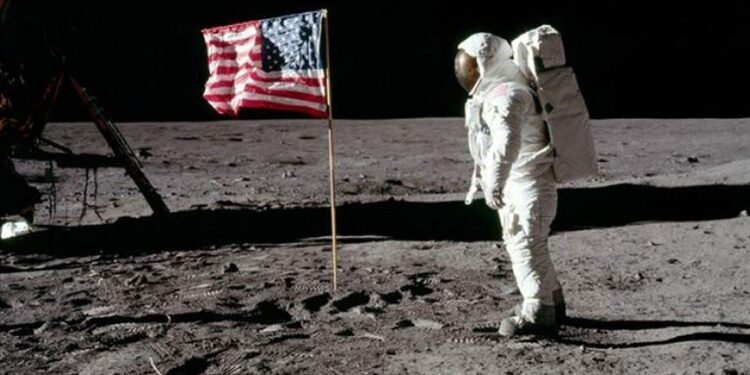Agencies-Gaza post
World marks 53rd anniversary of 1st man on moon
Forever, the United States will claim to be the first country to put a man on the moon.
Fifty-three years ago, on July 20, 1969, NASA’s Apollo 11 spacecraft landed on the moon with astronauts Neil Armstrong, Buzz Aldrin and Michael Collins.
The three became prominent figures worldwide, with Armstrong becoming the first human to set foot on the moon’s surface.
“This is a small step for man, a giant leap for mankind,” he shouted on that glorious day.
Brian Odom, acting chief historian of the United States Space Agency, said: “It is clearly the first we remember the most, and Neil’s achievement is certainly among the most prominent of all time.” “His quiet and wonderful behaviour during the mission also became legendary and made him the subject of many documentaries, films and stories.”
“The reaction to Apollo 11 has been enormous in the United States and internationally,” Odom told Anadolu. “Once the astronauts returned home, they became instant celebrities, as landing was understood to be one of humanity’s greatest achievements.”
Space Race
That day’s historic victory was the result of the United States fighting the Soviet Union during the 20th century in what became known as the Space Race.
“In May 1961, President John Kennedy committed the United States to the Moon programme. The decision followed a series of prominent Soviet firsts, including Sputnik in 1957 and Yuri Gagarin’s orbital voyage in April 1961, “Odom explained.
“At the time, the Cold War amplified these defeats, with communism and democracy stuck in what seemed to many to be an existential battle around the world.”
This competition between the two global giants prompted both countries to move forward in the space race with the aim of telling the world which country was number one. This means injecting countless resources into NASA’s space programme.
“At the time, the Cold War amplified these defeats, with communism and democracy stuck in what seemed to many to be an existential battle around the world.”
This competition between the two global giants prompted both countries to move forward in the space race with the aim of telling the world which country was number one. This means injecting countless resources into NASA’s space programme.
“Kennedy believed that technological achievements were important for the Cold War race, but also that investing in the Apollo program would have implications at home in terms of national R&D capabilities,” Odom said. “Kennedy believes this investment will also have implications for the American economy and society. The success of Apollo 11 in 1969 was the culmination of that process. ”
That first mission to the moon intensified America’s focus on the space programme and immediately affected the scientific community around the world.
Shuttle, Hubble, Mars Rover
“More missions have returned to the lunar surface, and science and exploration have expanded,” Odom explained. “These achievements allowed the United States and international partners to build on this success by returning to low Earth orbit to understand the microgravity environment, planetary science, astrophysics and geosciences.”
Less than three years after the United States put the first person on the moon, President Richard Nixon announced in 1972 that NASA would develop a space transport system that would include a vehicle capable of transporting “frequently from Earth to orbit and back.”
Then, on April 12, 1981, nine more years later, the first space shuttle, Colombia, took off, starting 30 years of 135 shuttle missions, which took more than 350 crew members to outer space, traveling more than 804 million kilometers (500 million miles) during that period.























